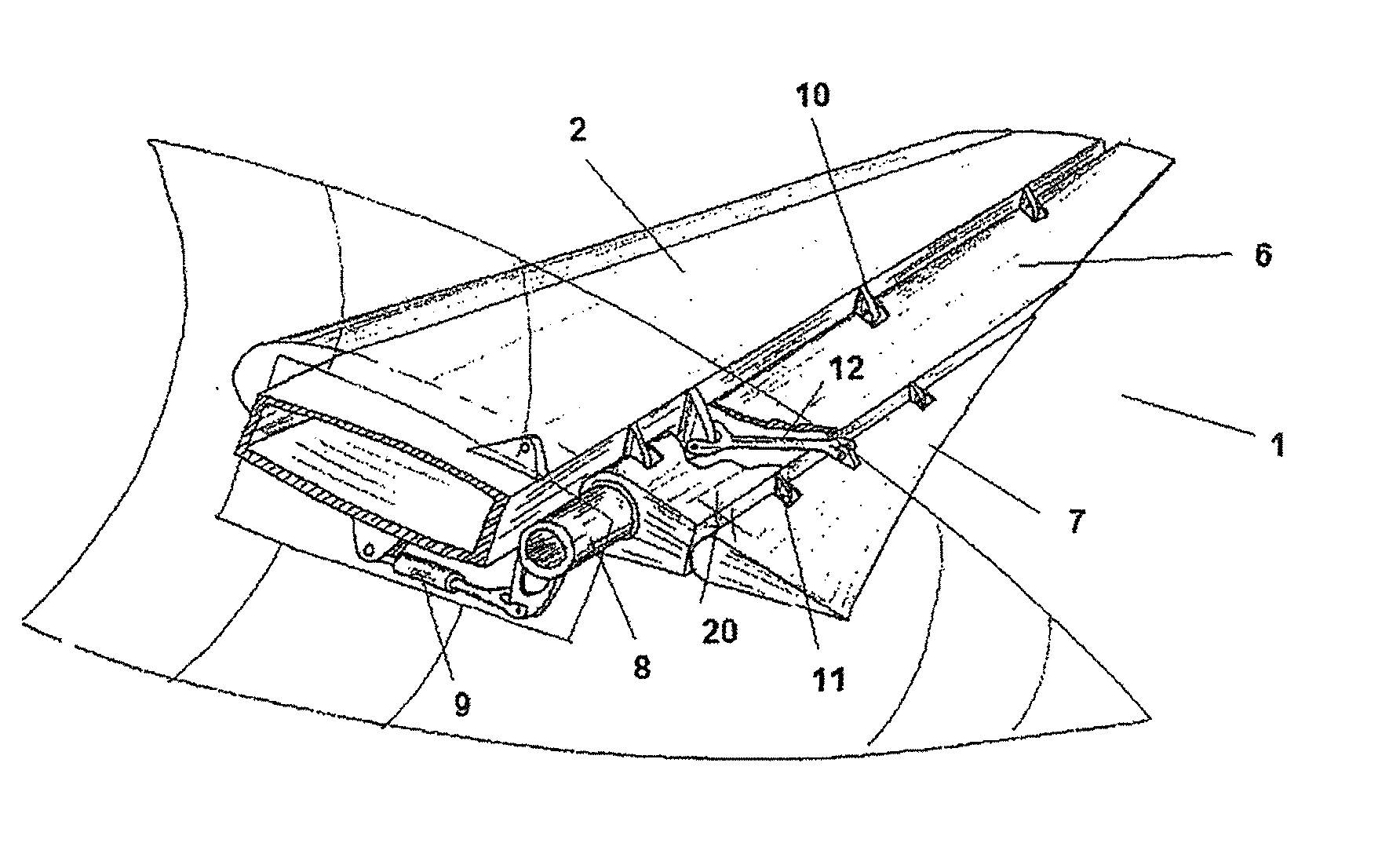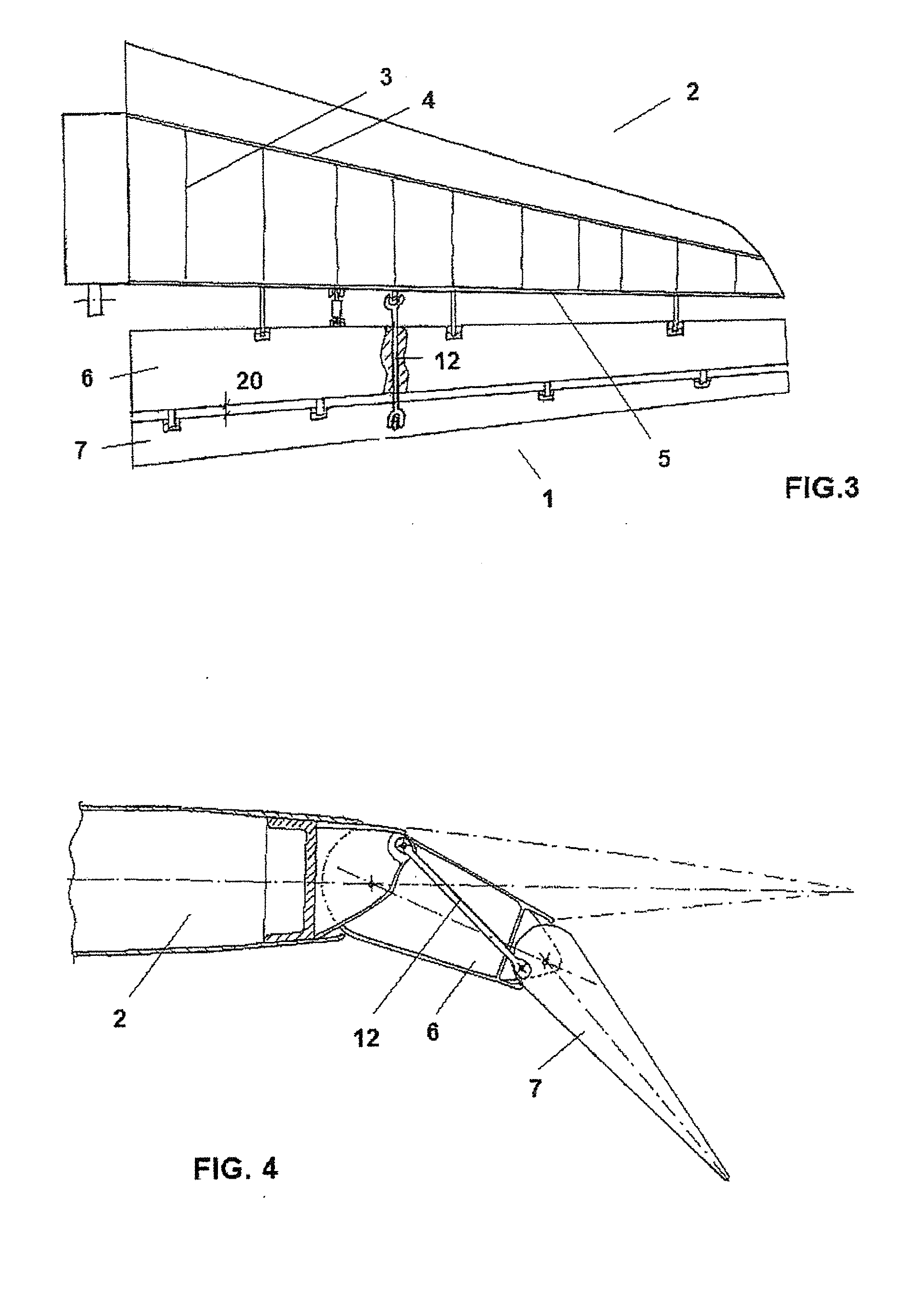Control surface of aircraft
a control surface and aircraft technology, applied in the direction of aircraft stabilisation, wing adjustment, wings, etc., can solve the problems of increasing the aerodynamic drag not allowing an increase in the control power, and lack of stiffness of the secondary element of the control surface, so as to achieve a greater effective curvature
- Summary
- Abstract
- Description
- Claims
- Application Information
AI Technical Summary
Benefits of technology
Problems solved by technology
Method used
Image
Examples
Embodiment Construction
[0015]In a preferred embodiment, the present invention relates to a control surface 1, with double hinges 10 and 11, for an lifting surface 2 of an aircraft, in particular for a stabilizer surface, that comprises ribs 3, rear spar 5 and front spar 4, said control surface 1 comprising a primary control surface 6 that comprises in its turn a hinge axis 10, and a secondary control surface 7, that comprises in its turn a hinge axis 11, with the secondary control surface 7 only partially occupying the span of the primary control surface 6, the primary control surface 6 being moved by means of a torsion bar 8 integral with said primary control surface 6, said torsion bar 8 being actuated by one or more actuator elements 9 located within the fuselage of the aircraft, or alternatively by means of actuators (not shown) positioned between the rear spar 5 and the primary control surface 6, with the secondary control surface 7 rotating about its hinge axis 11 fixed relative to the primary contr...
PUM
 Login to View More
Login to View More Abstract
Description
Claims
Application Information
 Login to View More
Login to View More - R&D
- Intellectual Property
- Life Sciences
- Materials
- Tech Scout
- Unparalleled Data Quality
- Higher Quality Content
- 60% Fewer Hallucinations
Browse by: Latest US Patents, China's latest patents, Technical Efficacy Thesaurus, Application Domain, Technology Topic, Popular Technical Reports.
© 2025 PatSnap. All rights reserved.Legal|Privacy policy|Modern Slavery Act Transparency Statement|Sitemap|About US| Contact US: help@patsnap.com



